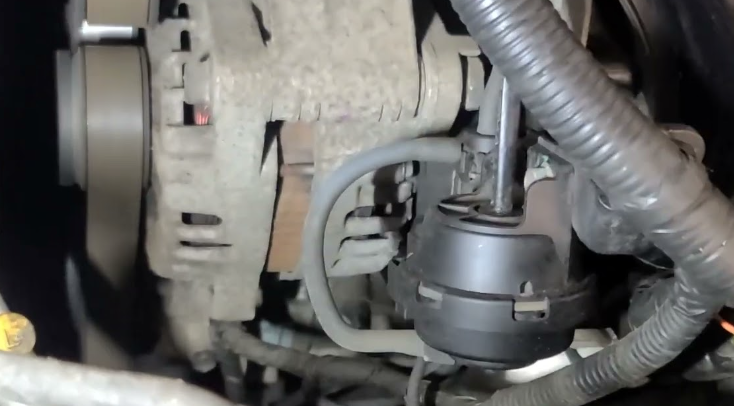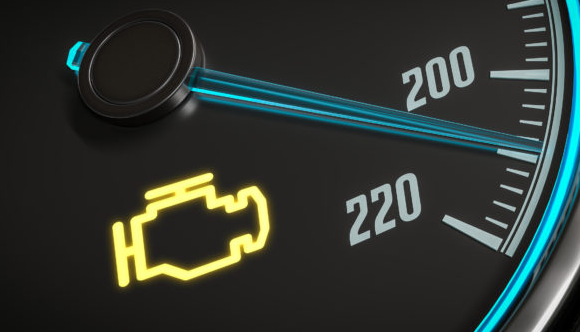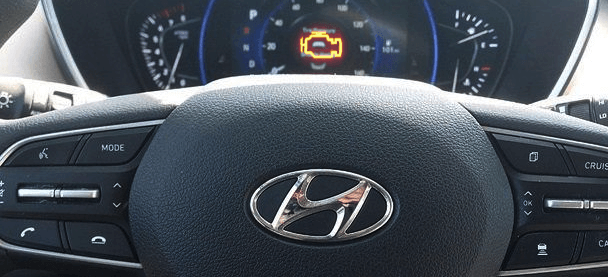Error code P1326 is a warning sign of potential engine damage, primarily due to the excessive wear of connecting rod bearings. This condition is identified by the Knock Sensor Detection System (KSDS), which detects abnormal vibrations. The Malfunction Indicator Lamp (MIL) illuminates to alert the driver of the impending issue. Additionally, a Diagnostic Trouble Code (DTC) is set to specify the underlying problem.
Root Causes of Error Code P1326

Several factors can trigger the P1326 error code:
- Damage to detonation sensor cables or connectors.
- Malfunctioning knock sensor.
- Engine in poor condition.
- Necessity for Engine Control Module (ECM) reprogramming.
- Fuel Rail Pressure Sensor Circuit Malfunction, particularly in vehicles with electronically controlled automatic transmissions.
Implications of P1326 on Hyundai Sonata
In Hyundai Sonata, if DTC P1326 is detected, it often necessitates a wiring inspection or, in severe cases, a replacement of the Sub Engine Assembly.
Limp Mode in Hyundai Engines

Limp mode, a security feature in vehicles, activates when a fault in the engine or transmission control unit is detected. This mode restricts vehicle speed and deactivates non-essential features like air conditioning.
Check Engine Light Blinking in Hyundai Sonata

A blinking check engine light in a Hyundai Sonata typically indicates a serious engine misfire, necessitating immediate attention.
Symptoms of Sensor Circuit Malfunction
Error code P1326 can manifest through various symptoms:
- Persistent illumination of the check engine light.
- Loss of engine power.
- Poor idling or stalling.
- Difficulty in starting the vehicle.
- Rough idling and stalling.
- General driving difficulties.
Diagnosing a Sensor Circuit Malfunction
Diagnosis of a sensor circuit malfunction requires professional expertise:
- Verification of error code P1326.
- Clearing the ECM and ensuring no other DTCs are active.
- Inspecting the knock sensor, wire harness, and ECM connections.
- Testing for open or short circuits in the knock sensor circuit.
- Checking spark plug wires, coil pack, fuel pressure, and injector pulse waveform if P1326 is reported by the PCM.
Cost of Diagnosing Sensor Circuit Malfunction
The cost varies from $225 to $1500, depending on the nature and extent of the repairs and labor time. Replacement knock sensors may range from $100 to $300, with installation costs varying by region and service provider.
Resolving Error Code P1326
To resolve this issue:
- Consult Technical Service Bulletins.
- Use an automotive scanner to check for additional DTCs related to P1326.
- Inspect and repair or replace the detonation sensor’s wires and connectors.
- Measure and adjust Knock Sensor voltages as necessary.
- Check the detonation sensor’s condition and replace if defective.
- Address any mechanical issues in the engine.
Common Diagnostic Errors
Mistakes in diagnosing sensor circuit malfunctions include:
- Misinterpreting data from various trouble codes.
- Overreliance on scanning accuracy.
- Misidentifying symptom sources.
- Overlooking other relevant DTCs.
- Neglecting to replace worn or contaminated parts.
- Not following recommended repair procedures.
Error Code P1326 in Kia and Hyundai Vehicles
In Kia Optima and Hyundai Santa Fe, P1326 indicates issues detected by the KSDS, primarily related to the connecting rod bearings. The warranty coverage for this code varies and should be confirmed with the dealer.
Identifying Symptoms of Sensor Circuit Malfunction
Error code P1326 can be elusive, often manifesting through various symptoms:
- Persistent activation of the check engine light.
- Engine power loss, potentially triggering error code P1326.
- Inconsistent idle or frequent stalling.
- Constant illumination of the malfunction indicator lamp (MIL).
- Difficulty in initiating the engine start.
- Rough idling and stalling episodes.
- General driving challenges.
Step-by-Step Guide to Diagnosing a Sensor Circuit Malfunction
Diagnosing a sensor circuit malfunction, particularly error code P1326, requires technical expertise:
- Confirm the presence of error code P1326.
- Initiate the diagnostic process by resetting the Engine Control Module (ECM).
- Ensure no other Diagnostic Trouble Codes (DTCs) are present.
- Thoroughly inspect the knock sensor, wire harness, and ECM connections for any looseness or damage.
- With the ignition key, turn to the ON position without starting the engine to test circuit integrity, then switch it back to OFF.
- If a circuit anomaly, such as an open or short circuit, is detected during this process, consider replacing the knock sensor. Additionally, if the Powertrain Control Module (PCM) reports error code P1326, conduct a detailed inspection for spark at each plug wire and coil pack. It’s also crucial to assess fuel pressure and the injector pulse waveform during engine cranking.
Cost Estimation for Diagnosing Sensor Circuit Malfunction
The cost to address a P1326 code typically ranges between $225 and $1500, subject to various factors:
- Type and Quantity of Replacement Parts: The specific components that require replacement significantly influence the total cost. The uniqueness of the code, often being manufacturer-specific, may necessitate specific parts, potentially limiting the use of alternative components.
- Labor Time: The duration required for diagnosis and repair plays a crucial role in determining the overall expense.
- Knock Sensor Replacement Costs: The price of replacement knock sensors generally falls between $100 and $300, varying based on the purchase source. Installation costs can range from $45 to $200, depending on geographical location and the service provider.
Efficient Resolution of Error Code P1326
Addressing sensor circuit malfunction, particularly error code P1326, involves several steps:
- Consult Technical Service Bulletins (TSBs): These bulletins provide crucial information for troubleshooting specific issues.
- Use of Automotive Scanner: Check for additional Diagnostic Trouble Codes (DTCs) related to P1326. Ensure the scanner’s diagnostic codes align with the issue at hand.
- Inspect Wires and Connectors: Examine the connections to the Detonation Sensor. Repair or replace components as needed.
- Voltage Measurements: Utilize appropriate tools to measure Knock Sensor voltages. Confirm that the circuit is neither open nor grounded, and adjust if necessary.
- Detonation Sensor Inspection: Follow manufacturer guidelines to assess the sensor’s condition and replace it if found defective.
- Mechanical Inspection: Examine the engine for any mechanical issues and address all stored codes, especially those linked to P1326.
Common Diagnostic Errors
Avoidable errors in diagnosing sensor circuit malfunctions include:
- Relying Solely on Trouble Code Data: Misinterpreting data from various codes can lead to incorrect conclusions.
- Overconfidence in Scanning Accuracy: Assuming that scan tools are infallible can lead to missed diagnoses.
- Misidentifying Symptom Sources: Incorrect determination of the cause of a symptom can hinder effective troubleshooting.
- Neglecting Concurrent DTCs: Not checking for other DTCs before diagnosing P1326 can lead to incomplete repairs.
- Omission of Part Replacement: Failing to replace components that have deteriorated due to wear or contamination.
- Ignoring Repair Protocols: It’s essential to use recommended fluids, cleaners, and lubricants in line with established automotive repair procedures.
Code P1326 in Kia Optima
This code is related to the knock sensor. The Knock Sensor Detection System (KSDS) in Kia Optima vehicles detects vibrations that suggest significant wear of the connecting rod bearings. The system alerts the driver of this condition to prevent potential severe engine damage and failure.
Meaning of Code P1326 in Hyundai Santa Fe
In Hyundai Santa Fe models, code P1326 indicates that the Powertrain Control Module (PCM) has detected engine “knock.” This is most commonly attributed to wear in the rod/main bearings of the engine.
Kia Code P1326
For Kia vehicles, this code signifies that the PCM has identified an abnormal signal from the Knock Sensor Detection System (KSDS), indicating potential issues in the engine’s internal components, like the bearings.
Warranty Coverage for Code P1326
The warranty coverage for this code varies. While it indicates a knock sensor issue, which might be covered under warranty, the actual coverage depends on the dealer’s policy. It is advisable for owners to confirm with their respective dealers, particularly since this code is predominantly found in Kia and Hyundai vehicles, and the coverage might be specific to these brands.
Was this page helpful?
